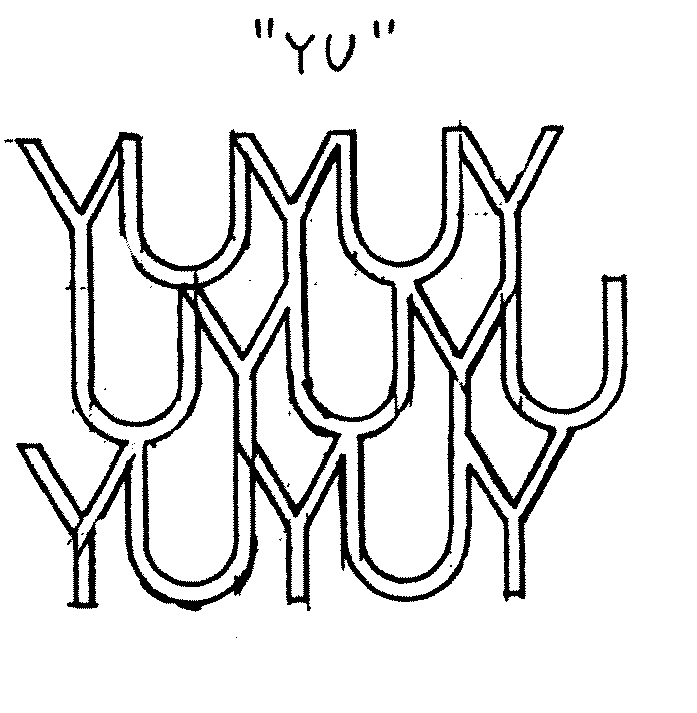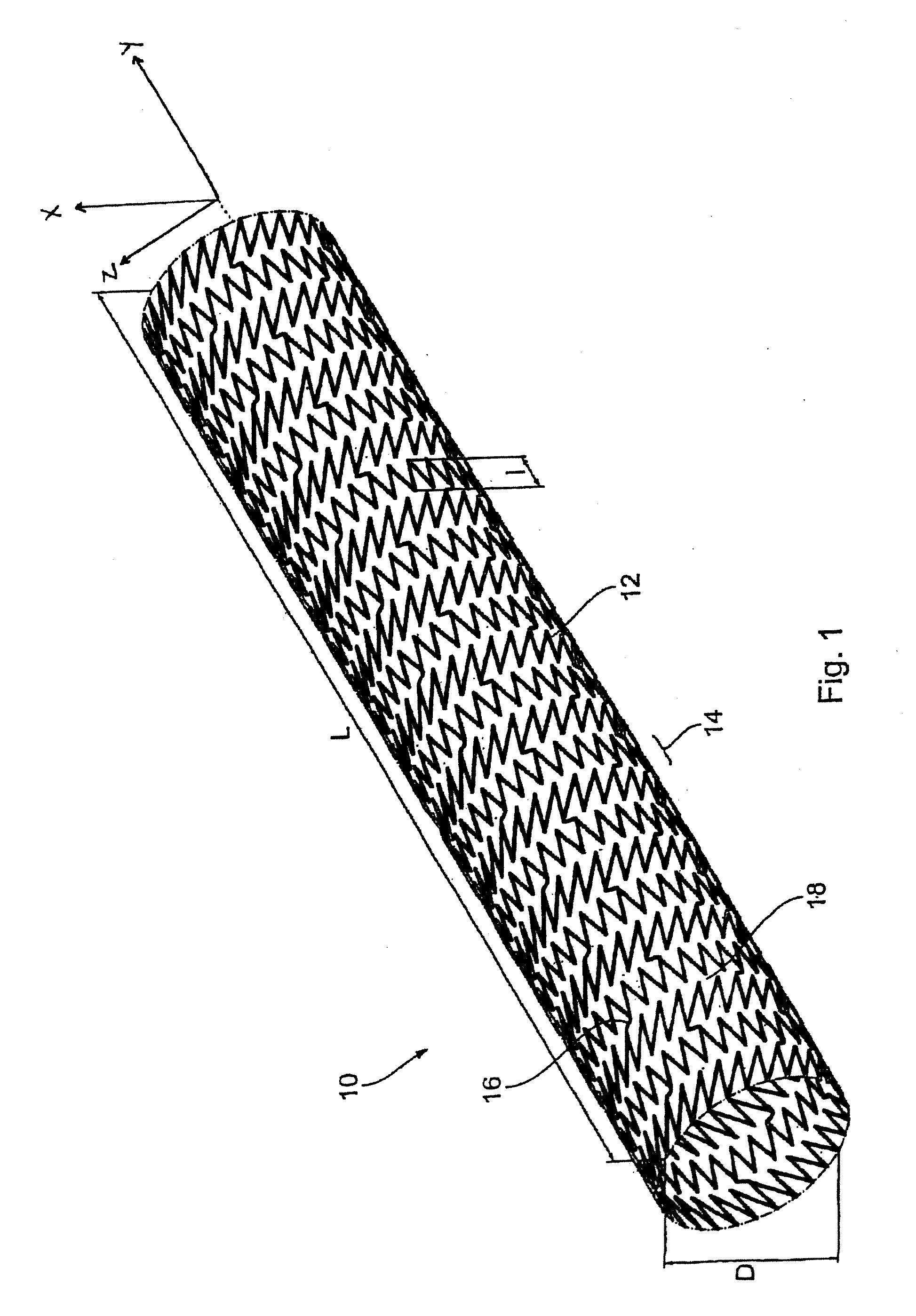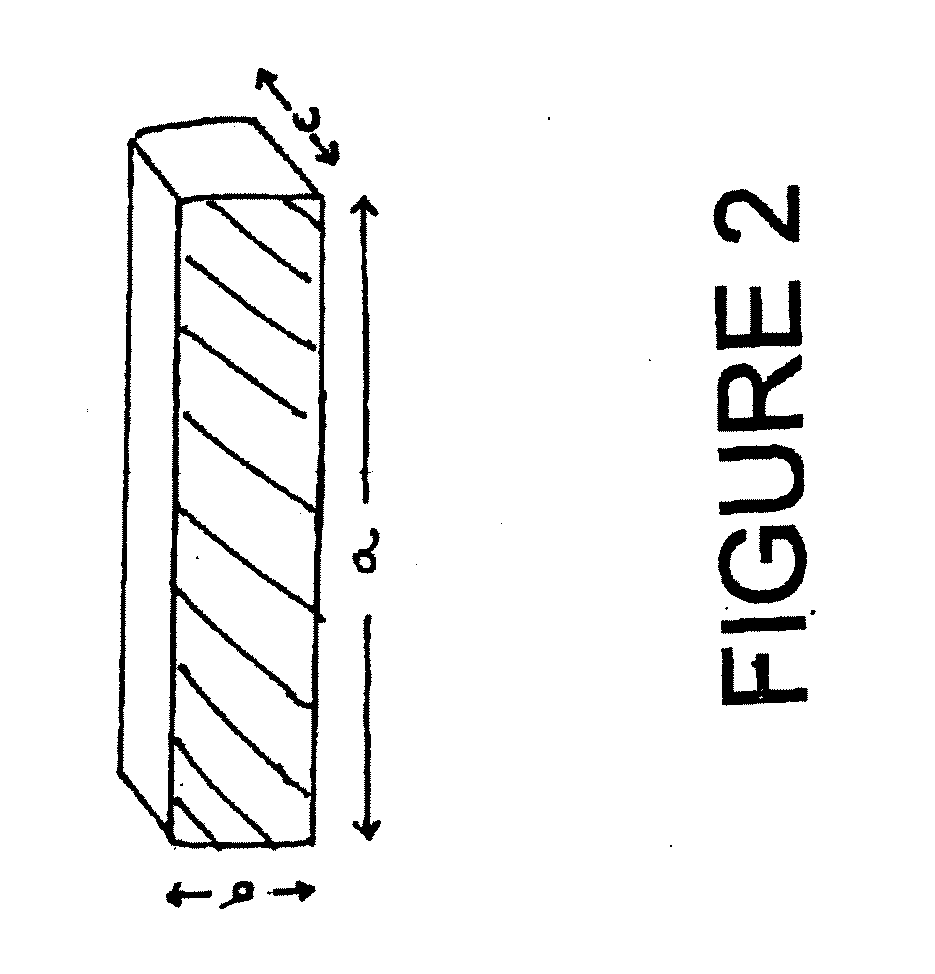[0008] In some cases, such as intraluminal endoprostheses, a durable support function afforded by the endoprosthesis is not required. Rather, in some situations, the
body tissue can recover in the presence of the support
prosthesis in such a way that there is no need for an ongoing supporting action by the
prosthesis. That has led to the idea of making such prostheses from bioresorbable material. The present invention is in part directed to the formation of medical devices for use in such situations. In one non-limiting embodiment of the invention, the stent of the present invention can be formed of a material that at least partially dissolves in and / or is at least partially absorbed by the body overtime so that the body passageway is eventually fully or partially free of one or more portions of the stent. As such, after the stent has at least partially fixed or repaired the block or partially blocked body passageway, the stent can be designed to at least partially dissolve in and / or be at least partially absorbed by the body so that the body passageway is at least partially free of the stent. By at least partially removing the stent from the body passageway, potential problems with
thrombosis, in-
stent restenosis, vascular narrowing and / or
restenosis in the body passageway in and / or around at the treatment location of the stent is reduced or eliminated. Such removal or partial removal of the stent from the body passageway also can result in the complete or partial removal of a potential obstruction in the body passageway for potentially future procedures in the body passageway. The bioabsorbability of one or more portions of the
medical device (e.g., stent, etc.) can also fully or partially solve problems associated with fracturing of one or more portions of the medical device as discussed above. The bioabsorbability of one or more portions the medical device can facilitate in at least partially overcoming this problem since such fractures and / or dislodged sections of the medical device can be formed of a material that at least partially degrade over time, thus at least partially removing itself from the body passageway of the patient.
[0009] In another and / or additional non-limiting aspect of the present invention, the medical device that is at least partially made of a bioabsorbable material has improved physical properties with improved
design characteristics as compared to past medical devices. In one non-limiting embodiment of the invention, the bioabsorbable material is a bioabsorbable
metal alloy. The
metal alloy used to at least partially form the medical device can be radiopaque; however, this is not required. In another and / or additional one non-limiting embodiment of the invention, the bioabsorbable material used to at least partially form the medical device can improve one or more physical properties of such medical device (strength, durability,
hardness, biostability, bendability,
coefficient of friction, radial strength, flexibility, tensile strength, tensile elongation, longitudinal lengthening, stress-strain properties, improved
recoil properties, radiopacity,
heat sensitivity,
biocompatibility, etc.); however, this is not required. These one or more improved physical properties of the bioabsorbable material can be achieved in the medical device without having to increase the bulk, volume and / or weight of the medical device, and in some instances these improved physical properties can be obtained even when the volume, bulk and / or weight of the medical device is reduced as compared to medical devices that are at least partially formed from traditional stainless steel or
cobalt and
chromium alloy materials; however, this is not required. In still another and / or additional one non-limiting embodiment of the invention, the bioabsorbable material that is used to at least partially form the medical device can thus 1) cause one or more portions of the medical device to be biodegradable and / or bioabsorbable, 2) increase the radiopacity of the medical device, 3) increase the radial strength of the medical device, 4) increase the yield strength and / or
ultimate tensile strength of the medical device, 5) improve the stress-strain properties of the medical device, 6) improve the crimping and / or expansion properties of the medical device, 7) improve the bendability and / or flexibility of the medical device, 8) improve the strength and / or durability of the medical device, 9) increase the
hardness of the medical device, 10) improve the longitudinal lengthening properties of the medical device, 11) improved the
recoil properties of the medical device, 12) improve the
friction coefficient of the medical device, 13) improve the
heat sensitivity properties of the medical device, 14) improve the biostability and / or
biocompatibility properties of the medical device, and / or 15) enable smaller, thinner and / or lighter weight medical devices to be made.
 Login to View More
Login to View More 


